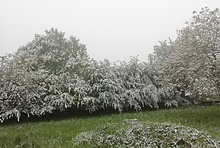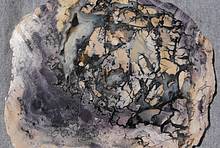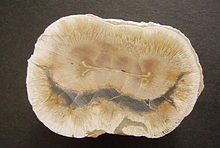Home PageAbout MindatThe Mindat ManualHistory of MindatCopyright StatusWho We AreContact UsAdvertise on Mindat
Donate to MindatCorporate SponsorshipSponsor a PageSponsored PagesMindat AdvertisersAdvertise on Mindat
Learning CenterWhat is a mineral?The most common minerals on earthInformation for EducatorsMindat ArticlesThe ElementsThe Rock H. Currier Digital LibraryGeologic Time
Minerals by PropertiesMinerals by ChemistryAdvanced Locality SearchRandom MineralRandom LocalitySearch by minIDLocalities Near MeSearch ArticlesSearch GlossaryMore Search Options
The Mindat ManualAdd a New PhotoRate PhotosLocality Edit ReportCoordinate Completion ReportAdd Glossary Item
Mining CompaniesStatisticsUsersMineral MuseumsClubs & OrganizationsMineral Shows & EventsThe Mindat DirectoryDevice SettingsThe Mineral Quiz
Photo SearchPhoto GalleriesSearch by ColorNew Photos TodayNew Photos YesterdayMembers' Photo GalleriesPast Photo of the Day GalleryPhotography
╳Discussions
💬 Home🔎 Search📅 LatestGroups
EducationOpen discussion area.Fakes & FraudsOpen discussion area.Field CollectingOpen discussion area.FossilsOpen discussion area.Gems and GemologyOpen discussion area.GeneralOpen discussion area.How to ContributeOpen discussion area.Identity HelpOpen discussion area.Improving Mindat.orgOpen discussion area.LocalitiesOpen discussion area.Lost and Stolen SpecimensOpen discussion area.MarketplaceOpen discussion area.MeteoritesOpen discussion area.Mindat ProductsOpen discussion area.Mineral ExchangesOpen discussion area.Mineral PhotographyOpen discussion area.Mineral ShowsOpen discussion area.Mineralogical ClassificationOpen discussion area.Mineralogy CourseOpen discussion area.MineralsOpen discussion area.Minerals and MuseumsOpen discussion area.PhotosOpen discussion area.Techniques for CollectorsOpen discussion area.The Rock H. Currier Digital LibraryOpen discussion area.UV MineralsOpen discussion area.Recent Images in Discussions
UV MineralsFake hauyne?

10th Jan 2017 17:04 UTCRio Reason
Could anyone give me an opinion on what's in these photos?
10th Jan 2017 17:10 UTCReiner Mielke Expert

10th Jan 2017 17:12 UTCRio Reason

10th Jan 2017 17:16 UTCRio Reason
http://www.mindat.org/photo-410005.html
The rest in the search are white, so I thought that maybe it was some other unusual form of it.
I think I had first just Googled "hauyne bagakhshan afghanistan" and ended up at that link.
10th Jan 2017 17:28 UTCReiner Mielke Expert
10th Jan 2017 22:08 UTCRalph S Bottrill 🌟 Manager
10th Jan 2017 22:21 UTCReiner Mielke Expert
10th Jan 2017 23:04 UTCRob Woodside 🌟 Manager

11th Jan 2017 04:11 UTCRio Reason
-------------------------------------------------------
> It's a hauyne with some translucency. The blue
> stuff in Lapis Lazuli that we used to call
> Lazurite is opaque and not fluorescent. The only
> caveate I'd have about it is if the crystal has
> been re attached. It is most likely from the
> Sar-e-Sang River occurrence where the hauynes do
> alter to white gonnardite. It looks a little acid
> eaten and if so, it came from the south side of
> the creek. Those from the north side escaped the
> acid.
Thank you, that's very interesting! :-)
Is the price as high as I think? Or could it actually be low from the damage? I couldn't find anything good to gauge it against, but maybe I don't know what places to look.
Ralph Bottrill Wrote:
-------------------------------------------------------
> It could be hauyne, or what we once called
> lazurite, or maybe afghanite or a number of
> related minerals found in this region, hard to say
> without testing.
...Are you saying lazurite is an outdated name for hauyne?
I don't suppose anyone could tell me how to pronounce hauyne/hauynite?

11th Jan 2017 04:38 UTCAlfredo Petrov Manager
11th Jan 2017 09:07 UTCRalph S Bottrill 🌟 Manager
11th Jan 2017 14:07 UTCUwe Kolitsch Manager

11th Jan 2017 16:50 UTCAlfredo Petrov Manager
11th Jan 2017 17:14 UTCOwen Melfyn Lewis
You called, mon ami?
@ Ralph,
Is that 'sulphur-rich' hauyne? See http://rruff.info/doclib/hom/lazurite.pdf, http://rruff.info/lazurite/ and http://rruff.info/hauyne/R070557. A comparison of the RRUFF raman spectra is thought provoking?
@ Uwe & Rio. Though it's been my language of daily use for 70 years, English is not my native tongue. The Brit/Eng pronounciation I find generally used for Hauyne and use myself is 'hain' (pronouced as is 'main'). It would be surprising though if pronounciation did not differ with the language of the speaker.
11th Jan 2017 18:46 UTCJosé Zendrera 🌟 Manager
The fluorescence photo is confusing. Looks like it has very distorted color due to blue light contamination from the UV source, maybe a 400 nm LED without filter or a "black light" fluorescent tube. Using a mercury vapor lamp with filter (365 nm) the fluorescence color of Sar-e-Sang sodalite is orangish red.

11th Jan 2017 19:38 UTCRio Reason
-------------------------------------------------------
> I think it could be sodalite.
> The fluorescence photo is confusing. Looks like it
> has very distorted color due to blue light
> contamination from the UV source, maybe a 400 nm
> LED without filter or a "black light" fluorescent
> tube. Using a mercury vapor lamp with filter (365
> nm) the fluorescence color of Sar-e-Sang sodalite
> is orangish red.
>
>
> Sar-e-Sang sodalite. Can see fluorescence photos
> in attached pics
Oh wow... that does look very similar. And they come from the same place? He sent me some more photos, I don't know if they'd help at all in identification, they're pretty low res. They do show quite a few more specimens, though:
Now that you've suggested it, I can see a resemblance to sodalite.

11th Jan 2017 19:42 UTCRio Reason
I hope some of you are fond of answering questions! I'm sure I'll have a lot, about a lot of different little treasures! :-D

11th Jan 2017 19:46 UTCRio Reason
-------------------------------------------------------
> I think it could be sodalite.
> The fluorescence photo is confusing. Looks like it
> has very distorted color due to blue light
> contamination from the UV source, maybe a 400 nm
> LED without filter or a "black light" fluorescent
> tube. Using a mercury vapor lamp with filter (365
> nm) the fluorescence color of Sar-e-Sang sodalite
> is orangish red.
>
>
> Sar-e-Sang sodalite. Can see fluorescence photos
> in attached pics
Oh, he did say that he took the photos using shortwave, but there's a serious language barrier. He may have just picked one to make me happy.

11th Jan 2017 19:51 UTCRio Reason
-------------------------------------------------------
> @ Uwe & Rio. Though it's been my language of daily
> use for 70 years, English is not my native tongue.
> The Brit/Eng pronounciation I find generally used
> for Hauyne and use myself is 'hain' (pronouced as
> is 'main'). It would be surprising though if
> pronounciation did not differ with the language of
> the speaker.
Thank you. I've been struggling with it! First I read it as "hi-yune," then of course with that stuck in my head I had to try to remember to read "ow-een." "Hain" makes a little more sense, but I'd probably sound silly to any American that heard me say it!
11th Jan 2017 22:09 UTCRalph S Bottrill 🌟 Manager
Owen, Hauyne has more sulphate than sulphide anions, while lazulite should be the opposite, but the Ruff analysis shows their "lazulite" is sulphate dominant, thus is hauyne.
12th Jan 2017 00:43 UTCOwen Melfyn Lewis
-------------------------------------------------------
> If you believe wikepedia its pronounced ah-ween,
> but it gives a slightly different pronunciation
> for Hauy (nearer to a-way) so it would be
> interesting to see how the French pronounce it?
Yes, it would - but would not be be binding on the English pronounciation(s). Languages frequently change the pronounciation of words they take into their own.
>
> Owen, Hauyne has more sulphate than sulphide
> anions, while lazulite should be the opposite, but
> the Ruff analysis shows their "lazulite" is
> sulphate dominant, thus is hauyne.
My reading of the entries in the RRUFF database suggests that hauyne does not have the sulphide anion whilst it is (always?) present in lazurite. There are four detailed analyses of lazurite from different parts of th world but only one for hauyne it would seem. There is no sulphate (SO4) in the ideal chemistry offered for lazurite but (as per the analyses) it is to be found (often?) in both hauyne and lazurite. Thus at least one key differentiator of lazurite from hauyne present is the presents of the sulphide anion. That anion is essential to the production of the startlingly rich blue pigment (ground lazurite) that is ultramarine. These days, thanks to lab synthesis, dye manufacturers seem to have the recipe pretty firmly fixed. But nature, as always, runs a very messy workshop and geological samples may well but rarely show an ideal composition.
Whether or not lazurite should retain its IMA status as a mineral species is a debate I'll stay out of. However, it is and I think always will be of importance to a significant number that lazurite be retained as the name for sulphide-rich molecule.
12th Jan 2017 10:57 UTCRalph S Bottrill 🌟 Manager
12th Jan 2017 19:56 UTCRob Woodside 🌟 Manager
13th Jan 2017 00:17 UTCJosé Zendrera 🌟 Manager
Three "sodalites" with very different UV response.
Up - Halogen light
Center - LW UV
Bottom - SW UV

20th Mar 2017 17:17 UTCcascaillou
you can hear the name of french mineralogist René Just Haüy in this video at 4:02
https://www.youtube.com/watch?v=gPZ4SX23osA
21st Mar 2017 22:16 UTCOwen Lewis
1. French pronounciation - 'onfleur. English pronounciation - Honfleur.
2. English pronounciation - Hartlepool. French pronounciation - 'artleypool.
In the written form, the h is always present in both languages but, even then, in French, where a noun is begun with the letter h and that noun is preceded by the definite article (the), then the definite article is always apostrophised, just as if the noun began with a vowel, e.g. l'hauyne.
Both treatments are pefectly correct - but only when set correctly in the context of the language being used. So, in English, the pronounciation of hauyne is hay-een. D'accord?

21st Mar 2017 22:34 UTCAlfredo Petrov Manager
21st Mar 2017 22:47 UTCReiner Mielke Expert

22nd Mar 2017 00:20 UTCcascaillou
22nd Mar 2017 14:50 UTCOwen Lewis
-------------------------------------------------------
> No accord ;)) ...because people's names should be
> pronounced the way the person pronounced his own
> name, regardless of language one is speaking. Owen
> would be pronounced like "oven" by a German, and
> you'd correct them and tell them the proper way to
> say your name, even if the two of you were
> speaking to each other in estonian, n'est-ce pas?
Tsk.... do please buck up Alfredo; you made all that up as you went along :-)
1. We are discussing the name of a mineral, in which personal sensitivities and preferences play no part. The rule stands as given regarding the aspiration of aitches in english and their universal silence in spoken french. So 'hay-een' it is. I didn't invent this. It's simply the explanation for the pronounciation that I learned and and since copy the use of. It's a word to be found in the vocabulary of perhaps only one person in every 10,000 or so? In any language you like.
2. I spent about six years working in an international headquarters in Germany, where english was the working language though there was a majority of native german-speakers on the staff. The correct German custom for addressing work-place colleagues and all others except for family and close personal friends is to use both title and surname, e.g. 'Herr Lewis (pronounced 'Loo-is). There is no discourtesy or unfriendiness implied in this; rather, there is expression of courtesy and respect. However, those several German colleagues and friends who wished to show their grasp of modern english culture and custom would refer to me as 'Oven'. Only one (with a truly excellent grasp of english) do I remember as managing 'Owen'. On no occasion did it ever occur to me to try and correct to 'Owen' the pronounciation of my name.

22nd Mar 2017 16:47 UTCcascaillou
PS: webmineral has an english audio file associated to each mineral name

24th Mar 2017 12:02 UTCHolger Hartmaier 🌟
24th Mar 2017 12:34 UTCOwen Lewis




Mindat.org is an outreach project of the Hudson Institute of Mineralogy, a 501(c)(3) not-for-profit organization.
Copyright © mindat.org and the Hudson Institute of Mineralogy 1993-2024, except where stated. Most political location boundaries are © OpenStreetMap contributors. Mindat.org relies on the contributions of thousands of members and supporters. Founded in 2000 by Jolyon Ralph.
Privacy Policy - Terms & Conditions - Contact Us / DMCA issues - Report a bug/vulnerability Current server date and time: April 23, 2024 21:36:26
Copyright © mindat.org and the Hudson Institute of Mineralogy 1993-2024, except where stated. Most political location boundaries are © OpenStreetMap contributors. Mindat.org relies on the contributions of thousands of members and supporters. Founded in 2000 by Jolyon Ralph.
Privacy Policy - Terms & Conditions - Contact Us / DMCA issues - Report a bug/vulnerability Current server date and time: April 23, 2024 21:36:26


















